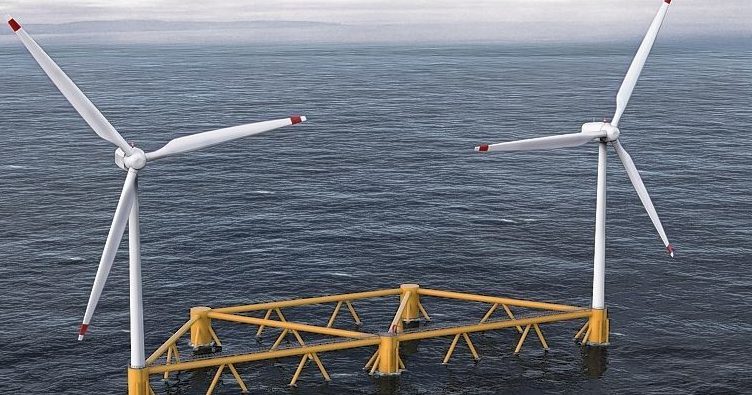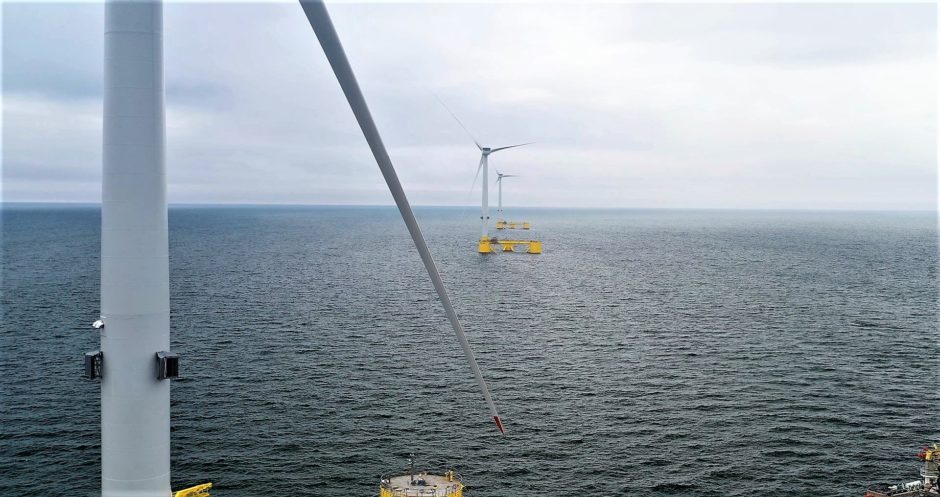
Plans for a floating offshore wind farm off the north coast of Scotland that appeared to have fallen by the wayside have resurfaced.
Danish investment company Copenhagen Infrastructure Partners (CIP) has breathed new life into the proposed Dounreay Tri project, located about 3 miles off Caithness.
The proposed 100 megawatt (MW) floating wind farm would consist of between six to 10 turbines and would act as a test bed for new technologies.
In order to advance the North Sea project, CIP has set up a “special purpose vehicle” called Highland Wind Limited. The company has a registered office in Edinburgh.
The proposals are an “update” to and would share the same location as the Dounreay Tri project, which was given “key consents” and a site lease in 2017.
Initially put forward by Hexicon, plans for the 10 MW floating offshore wind farm fell apart after a company, set up by the Swedish developer to lead the project, collapsed in 2017.
Hexicon subsequently said it hoped to get Dounreay Tri “back on track”, but there has been no movement on it in recent years.
CIP is now hoping to breathe new life into the idea with the Pentland Floating Offshore Wind Farm (PFOWF), which is pursuing a new “consent application” for the updated designs.
One of the options under consideration is a “semi-submersible substructure” that would support two inclined wind turbines, measuring more than 50 metres tall.
A similar concept was recently approved by energy consultancy and certification body DNV.
CIP expects PFOWF to reach financial close in 2024, at which point fabrication activities will start up and continue for 18 months. Construction of the wind farm will then kick off in 2026 and last for six months.
In an EIA Scoping Report, submitted to Marine Scotland last year, CIP said that Highland Wind Limited is exploring taking over the existing Section 36 and Deemed Planning consent secured by Hexicon.
The plan is for a demonstration floating turbine to be built “within the previous Marine License Area” – it would then form part of the wider wind farm.
The onshore infrastructure would also be in the same location near to the Dounreay substation.
CIP said the demonstrator project would be “consented and constructed separately” to the wider PFOWF project, for both offshore and onshore installations.
The initial phase is on track to be built in 2023.
Highland Wind Limited said it would adopt a “technology agnostic approach” to the development of PFOWF, which would draw on the “capabilities of the local supply chain”.
The company said it “firmly believes” that the project will be an enabler for “larger scale developments”, arising from the ScotWind offshore leasing round.
Dounreay Tri
An application for Dounreay Tri, which at the time would have been the world’s first floating wind farm, was initially lodged with the Scottish Government in 2016.
The plan was to install two turbines fixed onto a single semi-submersible platform, with a total capacity of about 10 megawatts.
Dounreay Tri, the company formed by Hexicon to manage the project, hoped to hook the development up to the grid in 2018.
However, it was placed “on hold” in 2017 when the firm formed for the project entered into administration.
In 2018, bosses at Hexicon said the green-energy investor was still committed to the project, despite the collapse of Dounreay Tri.
Recommended for you


 © Boskalis
© Boskalis